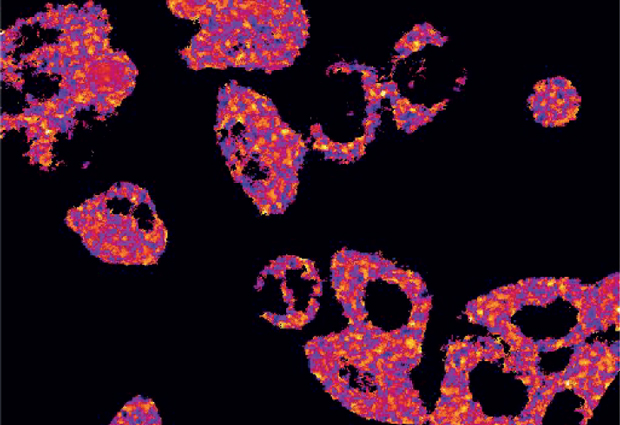
Metabolism matters
Cells at different stages of differentiation get energy in different ways, a new approach developed at EMBL shows

Life requires energy. The strategy a cell uses to obtain that energy can influence not only how fast it multiplies but also a variety of other processes, like which of its genes are turned on. This process – called metabolism – is challenging to track in time and space, so it has not been studied much in developing embryos. Alexander Aulehla shares how, in work published this week in Developmental Cell, his lab is starting to fill that gap.
What did you find?
To study energy metabolism during development, we looked at how somites – the parts of the embryo that will eventually give rise to the vertebral column and striated muscles – are formed in the mouse embryo. Somites develop from presomitic mesoderm (PSM). But cells in the PSM don’t all become somite cells at once. The tail bud, at one end of the PSM, contains cells that are still in a stem-cell-like state, while at the other end, cells are differentiating into somites.
We found that cells at different points of the PSM generate energy in different ways. Undifferentiated cells in the tail bud showed a higher rate of glycolysis – they get their energy mainly by breaking down glucose. In contrast, cells that are about to differentiate had a higher rate of respiration. And there’s a gradient between these two extremes, with more glycolysis the closer you get to the tail bud.

How did you do it?
This is one of those projects that was really only possible at EMBL. Vinay Bulusu had an EMBL Interdisciplinary Postdoc fellowship (EIPOD) to work in my lab and Carsten Schultz’s lab. That allowed us to say “let’s try something quite daring: can we visualise pyruvate (an important product of glycolysis) in a mouse embryo?” Working with the Schultz lab, Vinay was able to design a sensor (called a FRET sensor) that measures the amount of pyruvate, not just in cells in a dish, but in an embryo. Then we created a transgenic mouse line that expresses that FRET sensor in all cells and used those mice to analyse pyruvate levels during PSM development using real-time imaging. Thanks to a collaboration with Uwe Sauer’s lab at ETH Zurich, we were also able to use mass spectrometry to directly measure other products of glycolysis, to confirm that there’s a higher rate of glycolysis in the tail bud. It will be exciting to see how others can now use the FRET sensor mouse line in different contexts.
What questions does this raise?
The main question this raises is ‘why?’ Why do PSM cells, which all seem to proliferate at a similar rate, get energy in different ways? We have evidence this could be linked to – and even influence – the signaling machineries that control differentiation. A companion study published alongside ours confirms this link and we are now investigating exactly how this happens at the molecular level.


